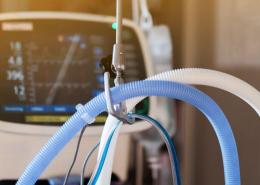7 FAQs About Generic Drugs

1. What is a generic drug?
A generic drug is loosely defined as a “copy” of a brand name drug. The active ingredient or drug content is identical or “bioequivalent,” and works in the body the same way as the brand name drug. Such drugs must show that their active ingredients get to the bloodstream at the same time and to the same extent as the brand name version.
Generics are similar to brand name drugs in several other ways. These include the quality of the product, how it’s absorbed in the body, the dosage form (meaning if it is a pill, inhaler, or liquid), safety, dose strength, the way it is administered (or in other words, whether it’s taken orally, injection, etc.), the way it performs (whether immediate or controlled release), and also the FDA-approved use. The U.S. Food and Drug Administration, or FDA, approves generics based on not only some, but ALL of these standards.
2. Are generic drugs as safe and effective as brand drugs?
Yes. Drug companies must prove to the FDA that the generic drug is either identical or otherwise bioequivalent to the brand drug, meaning they have the same quality, strength, purity and stability.
The FDA allows for small variations in flavor, color, packaging, and a few other parameters to account for variability during manufacturing. FDA limits how much variability is acceptable.
3. How are generic drugs approved?
The FDA approves generic drugs through a specific process. Drug companies must submit an abbreviated new drug application (called ANDA) for approval to market a generic product. The ANDA process does not require the generic drug company to repeat animal and clinical research on ingredients or dosage forms already approved for safety and effectiveness. However, the generic drug company must provide proof of bioequivalence.
To gain FDA approval, a generic drug must:
- contain the same active ingredient(s) as the brand drug (inactive ingredients such as fillers and dyes may vary)
- be identical in strength, dosage form, and route of administration
- have the same use indications
- be bioequivalent
- meet the same batch requirements for identity, strength, purity, and quality
- be manufactured under the same strict standards of FDA's good manufacturing practice regulations required for brand products
4. Why does a generic drug look different from the brand drug?
U.S. trademark laws often do not allow generic drugs to look exactly like the brand drug. Generic drugs may differ from brand drugs in terms of color and flavor among other things, and the FDA looks to ensure that they do not affect the way the drug works. Note that the generic drug must have the same active ingredient(s) as the brand drug.
There is also a category of generics called Authorized Generics that are identical to the brand name drug in almost all aspects (e.g., size, shape, color, taste, smell, active and inactive ingredients).
5. Are all brand drugs available in generic form?
Not every brand drug has a generic version. Most brand drugs are developed under patent protection for up to 20 years. This means that no one else is allowed to make and sell the drug. When the patent expires, other drug companies can start selling a generic version of the drug. But, first, they must test the drug and the FDA must approve it.
6. How do I know if there is a generic for my brand prescription?
To find out if there is a generic equivalent for your brand drug, ask your doctor or pharmacist. You can also check out this site: http://www.accessdata.fda.gov/scripts/cder/daf/
Always first speak to your doctor or pharmacist to see if a generic drug is right for you.
7. Why are the names of brand drugs so different from the names of generic drugs?
Drug products usually have a chemical name, generic name, and brand name. When a drug is first discovered, it is given a chemical name, which describes the atomic or molecular structure of the drug. Generic names are usually more complicated and harder to remember than brand names. Many generic names are a shorthand version of the drug’s chemical name, structure, or formula. The brand name is created by the company and is usually shorter and easier to remember.
Caroline Pak, PharmD, is the Medical Editor-in-Chief for Pfizer’s Get Healthy Stay Healthy website.
References
- 1. U.S. Food and Drug Administration. Generic drugs: questions and answers. Accessed November 21, 2016.
- 2. U.S. Food and Drug Administration. FDA fact sheet: What’s involved in reviewing and approving generic drug applications? Accessed November 21, 2016.
- 3. WebMD. Generic drugs: answers to common questions. Accessed November 21, 2016.
- 4. U.S. Food and Drug Administration. FDA list of authorized generic drugs. Accessed November 30, 2016.
- 5. U.S. Food and Drug Administration. Facts about generic drugs. Accessed November 21, 2016.
- 6. Vivian EM. Overview of generic drugs and drug naming. Merck Manual: Consumer Version Web site. Accessed November 21, 2016.





